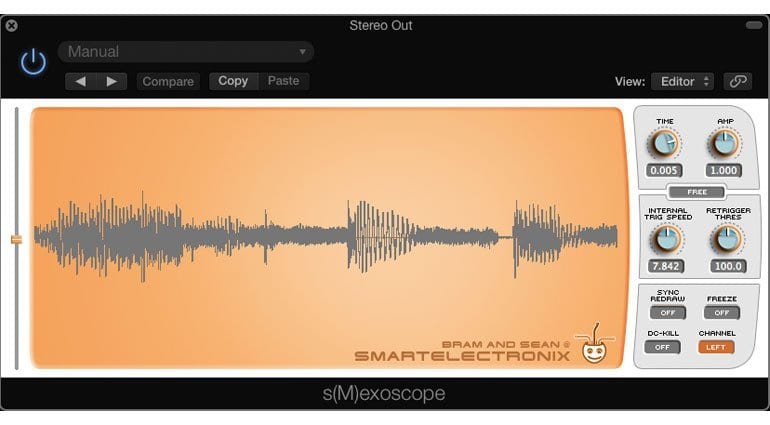

Here this envelope follower capability truly comes into its own. Just as an aside: Utility is also a module inside of Melda’s uber-effect, MXXX. Together they can transform the input signal into an envelope follower, possibly for use as the sidechain input of an effect on another track – probably not something you need too often. Next we have the RMS and Envelope functions. They are probably infrequently needed in MUtility.īut back to delay, if we need to offset one channel from the other in time, do that with a mode of Left or Right, causing delay to be applied only to the selected channel. The mode options are available in most of Melda’s plug-ins where the options might be used more frequently. Only the selected part of the signal is subject to processing while the other part is left untouched. Selecting Mid or Side is similar to Left or Right. The Mid+Side option converts the input to M/S for processing within the plug-in (and the output automatically gets converted back). In particular, if we select either Left or Right, then that channel is subject to processing while the other is left untouched.
#Smexoscope plugin full
In the very upper right in the UI (to the right of the meters) is a button that defaults to L+R, meaning leave the stereo input as is for subsequent processing.īut there are other useful options, the full list of which can be seen to the right. But what if your stereo signal has a timing mismatch between right and left? That can be handled as well, but we must take a detour to see how. This can be useful if your track has a phase or timing problem in relation to other tracks. To the right we have Delay, the amount of which can be dialed in using either samples or milliseconds. If your signal has an unwanted DC component (and when would you ever actually want a DC component?), this will remove it. The two Silence switches may have a use for someone somewhere, but I can’t think what that might be. The Invert controls flip the phase and Swap Left and Right, again, does just that. Lastly we have some switches, most functions of which are self-evident. It should probably be obvious that you would not mix the use of Panorama with the three controls just discussed. The Pan Law can be selected to taste, but leaving it at default will probably make you satisfied with the resulting balance. Easy: Panorama left positions the left channel and Right the right channel. You’d like to retain some stereo, but limit it to, say, just 25% of the soundstage width. Say you have a piano in your mix in which the stereo spread of low to high notes is extreme. But Panorama Law, Panorama Left and Panorama Right let you do something very useful and do it in a completely straightforward manner. Use which ever one is most pertinent but using both at the same time makes little sense. But, you say, don’t these overlap? Yes, they do. Here we have Volume (self-explanatory) and Gain (also self-explanatory).

#Smexoscope plugin windows
Let’s just walk through the sub windows one by one to see what this plug-in can do, starting with the Basic controls. There’s no real-life situation for which that would need to happen. Bear in mind that all the sub-functions in the screenshot are enabled in order for them to be visible. The full UI is shown at the top of this article, but let’s take a closer look at the main action that happens on the left part of the window. But those things in the “highly useful” category are functions that you might use to advantage in virtually every mix. It does a number of highly useful things and a number of things you’d only need in the most limited of circumstances. MUtility is a Swiss Army knife of mixing utility functions. Here’s another priceless plug-in gem from Melda Production that has innumerable practical uses – and we literally mean “priceless”.


 0 kommentar(er)
0 kommentar(er)
